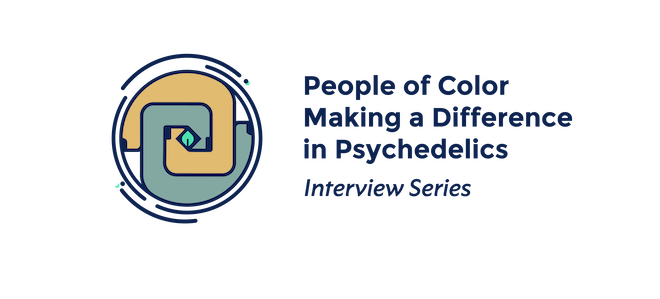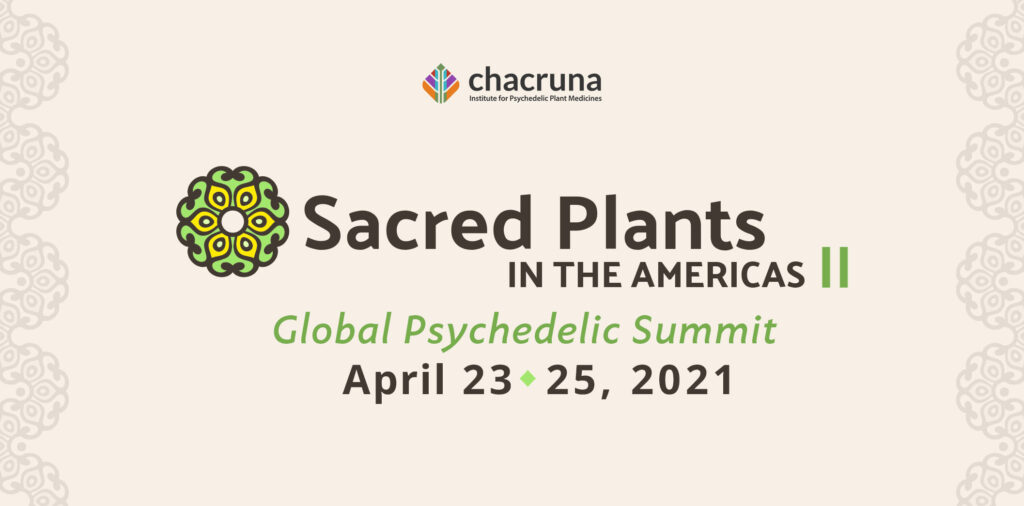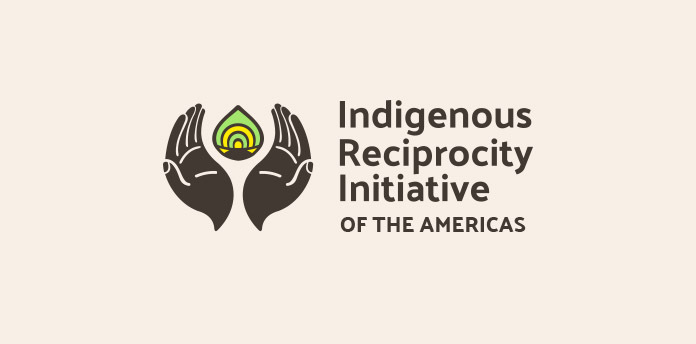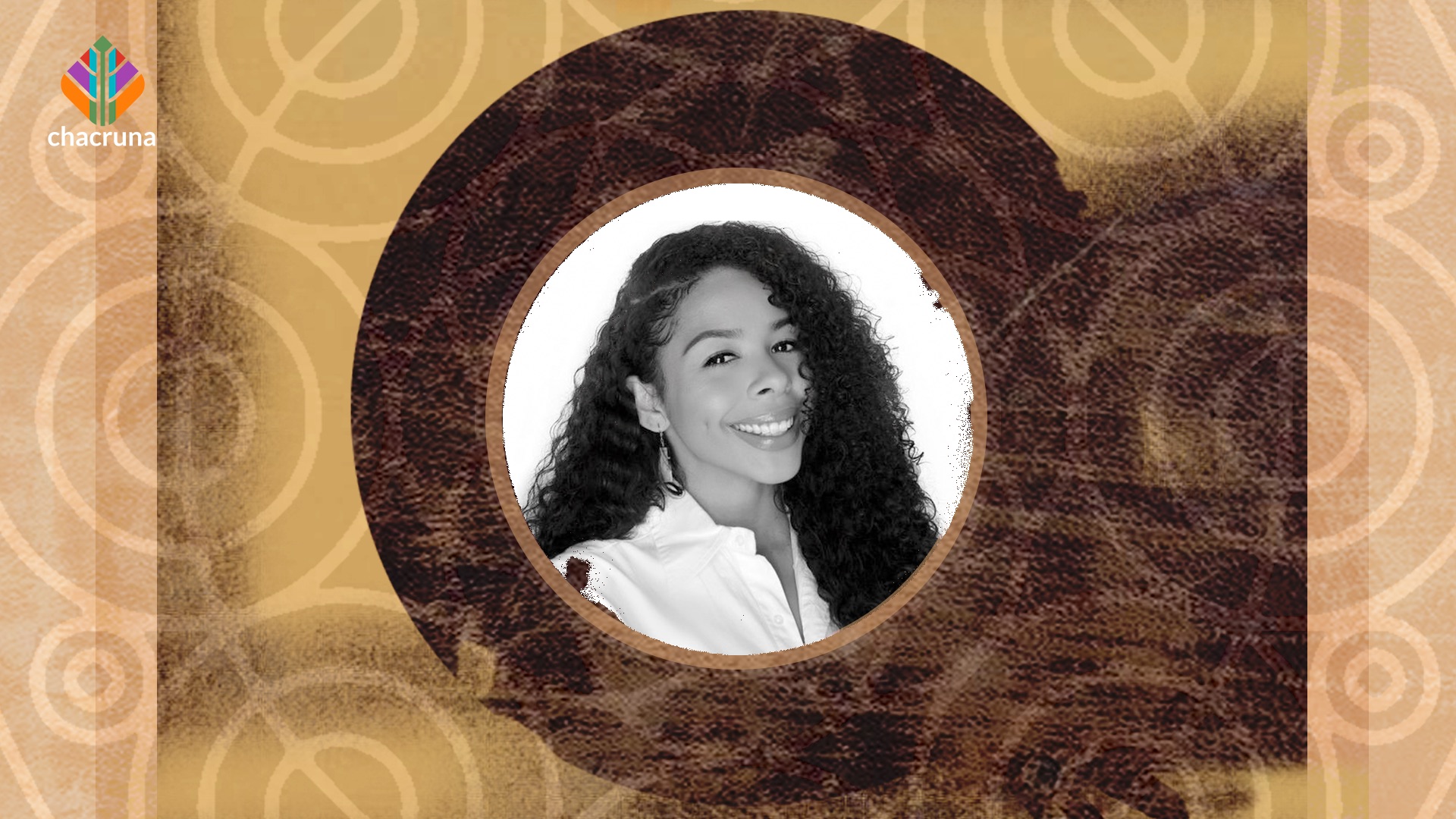- Entheogens, the African Diaspora, and BIPOC communities with Kufikiri Imara - January 20, 2021
- Innovating Native American Health Care Using Culture and Technology With Sutton King - January 11, 2021
- Navigating the Personal and Political in MDMA-assisted Psychotherapy with Sara Reed - December 29, 2020

Sutton King is an Afro-Indigenous activist who is innovating Native healthcare services and building sustainable businesses for Native and Indigenous peoples. As the former director of the New York City Federal Urban Indian Health Program, King worked at the US federal institution sanctioned to provide Native Americans healthcare, and her intuition was confirmed; it was fundamentally flawed as an institution due to the racist and colonial policies that made up its foundation.
Sutton King, now 27 years old, has been using innovative technology to build the future of Native healthcare, enterprise, and, possibly, start a healthcare revolution in its own right with her organization, Urban Indigenous Collective; her app, Shock Talk; and as Chief Impact Officer for Journey Collab.
Fresh out of college, King was ready to get to work. She became Tribal Program Specialist and Research Coordinator for the first simulation that trained law enforcement officials to engage with tribal youth without re-traumatizing them. Sutton King, now 27 years old, has been using innovative technology to build the future of Native healthcare, enterprise, and, possibly, start a healthcare revolution in its own right with her organization, Urban Indigenous Collective; her app, Shock Talk; and as Chief Impact Officer for Journey Collab. Journey Collab is a biotech company decolonizing the approach to psychedelic drug development.
In this interview, King gives us an inside look at Native American healthcare, growing up as a Native American activist, the history of Native Americans through the lens of erasure and healthcare, bringing Natives direct services through the Urban Indigenous Collective, and building Shock Talk, an app to connect Natives to culture, community, and therapists.
Maria Mocerino: To begin, what is your name in your Native language, and where are you from?
Sutton King: My name is Nāēqtaw-Pianakiw, which means “Come First Woman” in Menominee. In my culture, we are taught that it is important to have your Indian name for the day we go home to meet Creator. We are told that if we do not have our Indian name, Creator won’t recognize us. I’ve definitely embarked on a lot of “firsts” for my family (laughter). At my core, I am an Afro-Indigenous activist from the Menominee and Oneida Nations in Wisconsin. I grew up on both the Menominee and Oneida reservations of Wisconsin.
I was the tribal program specialist and Research Coordinator for the first-ever culturally-tailored simulation that trained law enforcement officials how to engage with tribal youth without re-traumatizing them.
MM: Can you share a “first” that you’ve embarked on?
SK: My first job out of college, in Manhattan, was at Kognito. Kognito is a health simulation company that prepares people to lead real-life conversations that change lives. I was the tribal program specialist and Research Coordinator for the first-ever culturally-tailored simulation that trained law enforcement officials how to engage with tribal youth without re-traumatizing them. I also implemented suicide-prevention technology programs to help facilitate conversations between teachers, students, the youth, and their peers. I might have been the “first” to direct this technology towards Natives, but I couldn’t stop thinking about how long it took for these innovative solutions to come to my community. That didn’t sit right with me.
MM: You said the syllabus of psychedelic science usually begins with Albert Hofmann, the Swiss chemist who first synthesized LSD, circa 1938. What is problematic about that from an Indigenous perspective?
SK: The general public, as well as Western science, falsely assumes that psychedelic science began during the twentieth century with Albert Hofmann. In other words, they aren’t informed about Native traditions or healing practices, so they are using a Western lens. Of course, I want to give credit to every scientist that has contributed to advancing this field. However, that narrative fails to account for the Native peoples’ contributions to scientific knowledge and expertise in this field.

Join us at Sacred Plants in the Americas II
Indigenous peoples are scientific; our science includes the heart. Much of our history and research is shared through the Indigenous methodology of storytelling. From a colonial perspective, this approach is seen as less credible.
Indigenous peoples are scientific; our science includes the heart. Much of our history and research is shared through the Indigenous methodology of storytelling. From a colonial perspective, this approach is seen as less credible. The application of the Indigenous approach within traditional storytelling encourages cocreation, collaboration, inclusion, trust, and acceptance, and has been practiced since time immemorial. Our traditions and our wisdom predate any legislative or research movement around these substances on this continent. The psychedelic movement has to honor that.
MM: Where did your experience with plant medicines begin? How were you educated about them?
SK: I believe that plant medicines could be used as instruments towards instigating a global healing, as is documented in Indigenous history. Personally, I’ve used them as tools to look at deeply rooted traumas and harness my resiliency as an Indigenous person. However, my introduction to plant medicines didn’t come until later in life. I was able to heal in remarkable ways that I didn’t even think were possible due to the historical and intergenerational trauma within my lineage, along with what I experienced myself.
My family was sent to Carlisle Indian Boarding School in the early 1900s. The school’s mantra was “kill the Indian and save the man.”
MM: Could you share an example of how these policies impacted your family?
SK: I am the granddaughter of the last chiefs of my tribe, the direct descendant of Chief Oskosh. My family was sent to Carlisle Indian Boarding School in the early 1900s. The school’s mantra was “kill the Indian and save the man.” I’ve personally read letters from my grandfather to the school checking in on his children and advocating for them when they wanted to return home to the Menominee reservation. The boarding school era caused my family physical and emotional pain. That experience was passed down through our DNA, whether we realize it or not.
This is why I say culture is medicine.
Sovereignty was taken from the Native tribes. Self-determination was ripped from the Menominee people. We went from thriving as a Native nation to become one of the poorest tribes. The funding streams for our healthcare, education, and judicial systems were gutted. This is why I say culture is medicine.
MM: What do you mean that culture is medicine?
SK: My mother was an activist. She’d never call herself that, but that’s what I call her. Outside the Oneida reservation, my mother led an urban Indian health program called TRAILS for tribal youth with parents that had substance-use disorders. She ensured that they were connected to community and culture. I saw what an impact it had on them.
In the Oneida tribe, we live by a guiding principle, called meaning “of the seven generations.” No matter we do in life, we are not here only for ourselves. We have a responsibility to make life sustainable in order for our future generations to thrive. My mother passed this lesson onto our youth to strengthen their resilience as Native people. We speak at length about the traumas that we’ve all been through, but we sometimes fail to recognize that we are true survivors. She made me proud to be Indian.
For example, I felt a pull towards the jingle dress. We dance in order heal those who are sick. I say that culture is medicine because we believe and live that.
The Natives exchanged their land and resources to the US government for the right to healthcare. It is documented in numerous treaties that the US government has a fiduciary obligation to provide healthcare to Native Americans. That’s our legal right.
MM: How does this relate to Native American health care?
SK: The Natives exchanged their land and resources to the US government for the right to healthcare. It is documented in numerous treaties that the US government has a fiduciary obligation to provide healthcare to Native Americans. That’s our legal right. The Indian Health Service is the lead federal agency tasked with ensuring the optimal health of Natives, but how can they do that if they’re funded at 50% of their capacity? How is that honoring our sacred bargain?
MM: Eventually, you became the Director of the Urban Indian Health Program within the Indian Health Service. What did that experience reveal to you about the injustices Native Americans face within this health care system?
SK: New York City has one of the largest populations of urban Natives in the country. A lot of people don’t know that because of the continued erasure of Indigenous peoples, including their data.

Discover Indigenous Reciprocity Iniciative of the Americas
I cannot locate segregated data from the NYC Department of Health to determine how COVID is impacting Native communities. We’re lumped into “other,” can you believe that? If Natives don’t exist in the data, this legally eliminates the fiduciary obligation of the United States to Native Americans.
MM: The US government is erasing Native health data?
SK: When we’re talking about urban Indigenous health outcomes, the data is virtually nonexistent. Recently, I was at a press conference holding the de Blasio administration accountable for this. I cannot locate segregated data from the NYC Department of Health to determine how COVID is impacting Native communities. We’re lumped into “other,” can you believe that? If Natives don’t exist in the data, this legally eliminates the fiduciary obligation of the United States to Native Americans. I believe it’s intentional. I’d even call it data terrorism, because this is paper genocide.
MM: Are Natives accounted for at all? You said that segregated data doesn’t exist, but does the data even exist? Or, is that part of the next step? Building infrastructure in order to do that?
SK: We are accounted for to some degree but oftentimes are deemed “not significantly significant” or “hard to reach.”
In order to qualify for health care, the federal government has criteria to determine whether someone is Native. One of their measuring tools is called “blood quantum.”
MM: What else is problematic about the infrastructure of the IHS?
SK: In order to qualify for health care, the federal government has criteria to determine whether someone is Native. One of their measuring tools is called “blood quantum.” In other words, Native Americans have to prove how much Indian blood they have. We literally have paper documents. No other group has to do this aside from dogs and horses. This was a tool used to eliminate Native people, because blood quantum only decreases through the generations.
For example, you could have a 100% Native child with a parent from two different tribes. That child would be considered 50% Native in each tribe. If that person decides to love someone that isn’t Native, they would then become a quarter Native. I say that because a Native person has to prove their blood quantum in order to receive healthcare through Indian Health Service.
Many, many Natives lost their cultures; let alone, the paper documentation that proved their blood quantum. I had to turn people away because they didn’t have it. That wasn’t right with me.
When we think about the colonial policies instituted in the Relocation Era, Natives were encouraged to leave the reservations and move to urban places. In exchange, they were promised resources and jobs. Instead, they were met with prejudice, discrimination, and unemployment. Many, many Natives lost their cultures; let alone, the paper documentation that proved their blood quantum. I had to turn people away because they didn’t have it. That wasn’t right with me.
MM: So, the IHS doesn’t collect the health data necessary to provide adequate services, and they require a person to have colonial documentation—literally—to prove their “Nativeness?” What happens, then, once a Native person “passes” and attempts to receive health care?
SK: I spoke to someone from the Pine Ridge Reservation, which could be considered one of the harshest amongst the nations. He had been diagnosed with bi-polar disorder and MS. He couldn’t get an appointment for an intake for four months at the IHS. Six months after that, he finally saw a therapist. In total, it took a man with bi-polar disorder and MS ten months to see a doctor. Now, this Native man sees his therapist “regularly.” According to the IHS, that’s once every four months. One of the biggest problems facing Natives is the inability to access direct services.
At Urban Indigenous Collective, we want to provide Natives direct services without colonialist criteria determining who we are and what makes us who we are.
MM: Let’s talk about how your nonprofit, Urban Indigenous Collective, seeks to address these problems, and more, that are facing Native and Indigenous peoples?
JK: At Urban Indigenous Collective, we want to provide Natives direct services without colonialist criteria determining who we are and what makes us who we are. In starting the Urban Indigenous Collective, our aim was to “indigenize” the infrastructure of NYC to support Native American health and wellbeing. We believe that, as Native people, we have the solutions as to what our communities need to heal and thrive.
MM: What do mean by “indigenize the infrastructure”?
JK: There are 100,000 self-identifying Natives around New York City. There is a lack of culturally-appropriate resources within the different agencies that exist right now. We plan to educate organizations that serve Native communities, such as the Department of Health, Department of Education, and Department of Transportation. Eventually, we envision building a culturally-tailored mental healthcare center and an Indigenous innovative incubator.
MM: How do you define “Urban Native” at the Urban Indigenous Collective?
SK: We define it as any Indigenous person from North, Central, and South Americas, including the Caribbean and Pacific Islands, who is living in the urban areas. Our organization doesn’t want to divide, but rather seeks to bring Indigenous people together who are disproportionately impacted by negative health outcomes.
MM: What programs are currently underway?
SK: We are investigating the impact of COVID on Native mental health, and we’ve just published a paper about it in the UCLA Native American Journal. We are also addressing the acts of violence happening to our Indigenous women through our Missing and Murdered Indigenous Women, Girls, and Two-Spirit People Database. We have to educate people but, without the data, how are we supposed to do that? That’s our primary objective right now.
There are many barriers when it comes to scaling nonprofits because they are dependent on grant dollars and donations. Indigenous people don’t get a lot of those, so we have to come up with our own solutions. We decided to use a steward-ownership model, leveraging technology and incorporating it into for-profit companies like Shock Talk. We would then allocate a percentage of the revenue back to support the Urban Indigenous Collective.
Shock Talk is a tele-behavioral app that connects Natives to Indigenous and Native therapists.
MM: To conclude, what’s Shock Talk, and why is this app needed?
SK: Shock Talk is a tele-behavioral app that connects Natives to Indigenous and Native therapists. These are providers with a comprehensive approach to mental health, grounded in cultural humility, and geared towards healing historical and inter-generational trauma. It would connect users on-demand to therapists, community, and content curated for Native and Indigenous users around culture, traditions, storytelling, and music. Native health takes the whole body into account and has many healing tools. Shock Talk reflects that.
Sign up to our Newsletter:
I pitched Shock Talk recently to a panel of judges at a start-up event. Do you know what they said to me? “Niche markets would love to know how you plan on sustaining this, knowing that the population of Natives are declining.”
I pitched Shock Talk recently to a panel of judges at a start-up event. Do you know what they said to me? “Niche markets would love to know how you plan on sustaining this, knowing that the population of Natives are declining.”
Shock Talk is needed because that comment is not true. We’re still here.[14] Though we were massacred and our populations declined by 99%, we are no longer declining in number. We are the one percent that is actually growing in number, and we need these resources more than ever.
Art by Mariom Luna.
Take a minute to browse our stock:
Did you enjoy reading this article?
Please support Chacruna's work by donating to us. We are an independent organization and we offer free education and advocacy for psychedelic plant medicines. We are a team of dedicated volunteers!
Can you help Chacruna advance cultural understanding around these substances?









